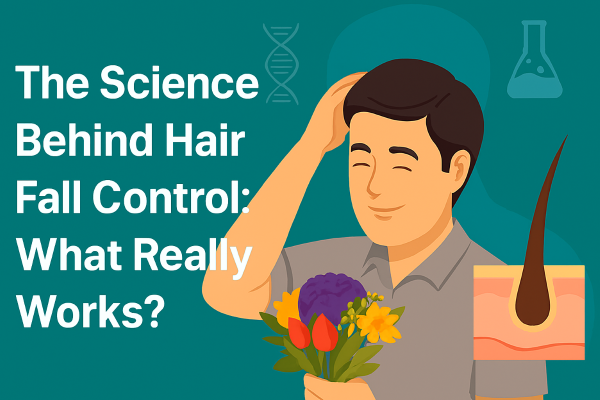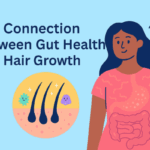Hair fall is more than just a cosmetic concern — it’s a biological process influenced by genetics, hormones, nutrition, and lifestyle. Understanding the science behind hair fall control helps you choose treatments that truly work, rather than relying on myths or temporary fixes. Let’s uncover how hair grows, why it falls, and what science-backed solutions can help you keep it healthy and strong.
1. Understanding the Hair Growth Cycle
Your hair follows a natural life cycle made up of three stages:
Anagen (Growth Phase): Hair grows actively for 2–7 years.
Catagen (Transition Phase): Hair growth slows and the follicle shrinks.
Telogen (Resting Phase): Hair eventually sheds and new strands begin to grow.
When this cycle is disrupted — due to stress, hormonal changes, or nutrient deficiencies — more hair enters the resting phase, leading to visible thinning or hair loss.
2. Common Scientific Causes of Hair Fall
A. Hormonal Imbalance
Androgenic alopecia (pattern baldness) is caused by sensitivity to Dihydrotestosterone (DHT) — a hormone that shrinks hair follicles and shortens the growth cycle.
B. Nutrient Deficiency
Lack of iron, protein, zinc, and biotin can weaken hair strands and slow growth.
C. Stress and Cortisol
High stress levels increase cortisol production, which can push hair prematurely into the shedding phase.
D. Scalp Conditions
Dandruff, fungal infections, or clogged follicles can restrict oxygen supply to roots, causing breakage and thinning.
3. Science-Backed Solutions for Hair Fall Control
A. PRP (Platelet-Rich Plasma) Therapy
PRP uses your own blood’s platelets to stimulate follicle repair and boost hair growth naturally. Studies show significant improvement in density and thickness with consistent sessions.
B. Low-Level Laser Therapy (LLLT)
Laser light stimulates cell activity in the scalp, enhances metabolism, and encourages stronger regrowth.
C. Hair Transplantation (FUE/FUT)
For advanced hair loss, transplantation offers a permanent, natural-looking solution using your own healthy follicles.
4. Lifestyle Factors That Support Scientific Treatments
Balanced Diet: Include lean proteins, leafy greens, nuts, and seeds to nourish your follicles.
Stress Management: Try yoga, meditation, or regular exercise.
Proper Hair Care: Avoid excessive heat, tight hairstyles, and harsh chemicals.
Sleep and Hydration: Essential for healthy cell regeneration and scalp balance.
5. Why Professional Guidance Matters
Each person’s hair loss pattern is unique. A professional hair specialist can perform scalp analysis, hormone tests, and recommend treatments suited specifically to your condition. At Radiance Hair Transplant Center, advanced diagnostic tools and personalized care plans ensure the best possible results.
Conclusion
Hair fall control isn’t just about applying oils or using expensive shampoos — it’s about understanding the science behind your scalp and follicles. With the right diagnosis, medical treatments, and healthy habits, you can restore balance and regrow your confidence. At Radiance Hair Transplant Center, we combine scientific precision with expert care to help you achieve stronger, fuller hair — the smart way.




